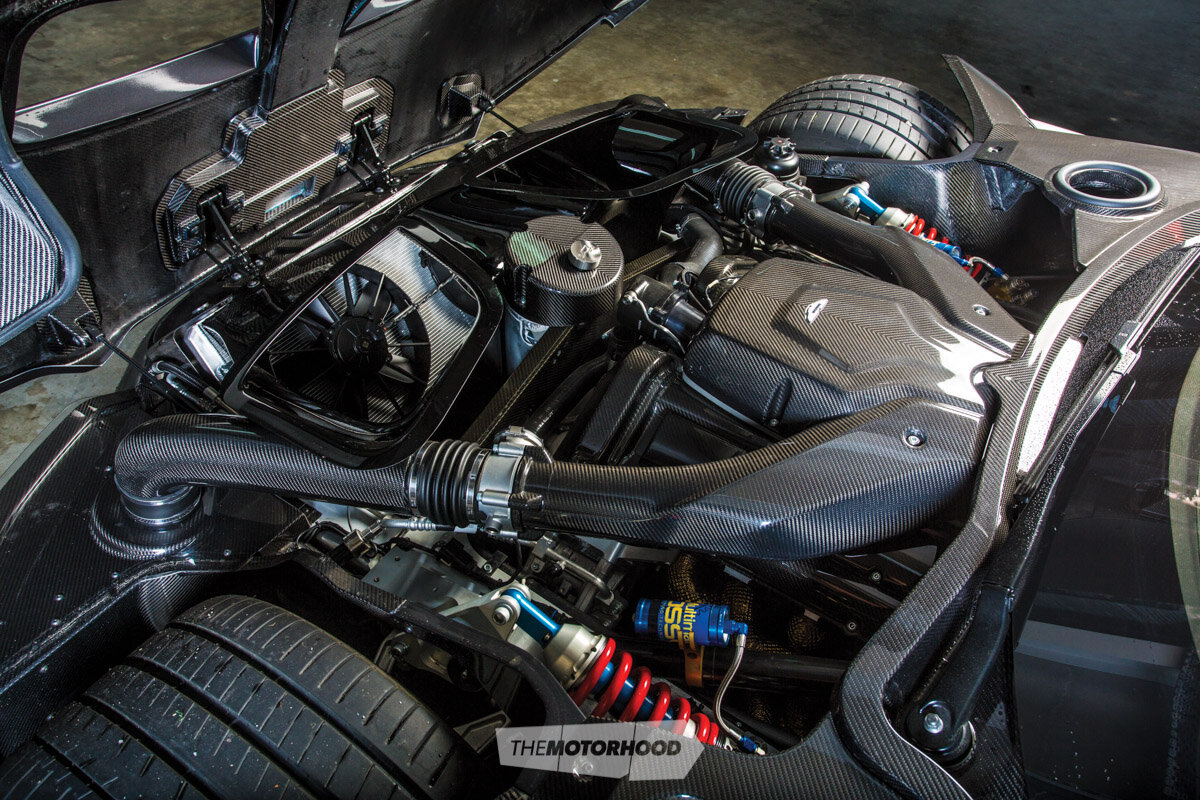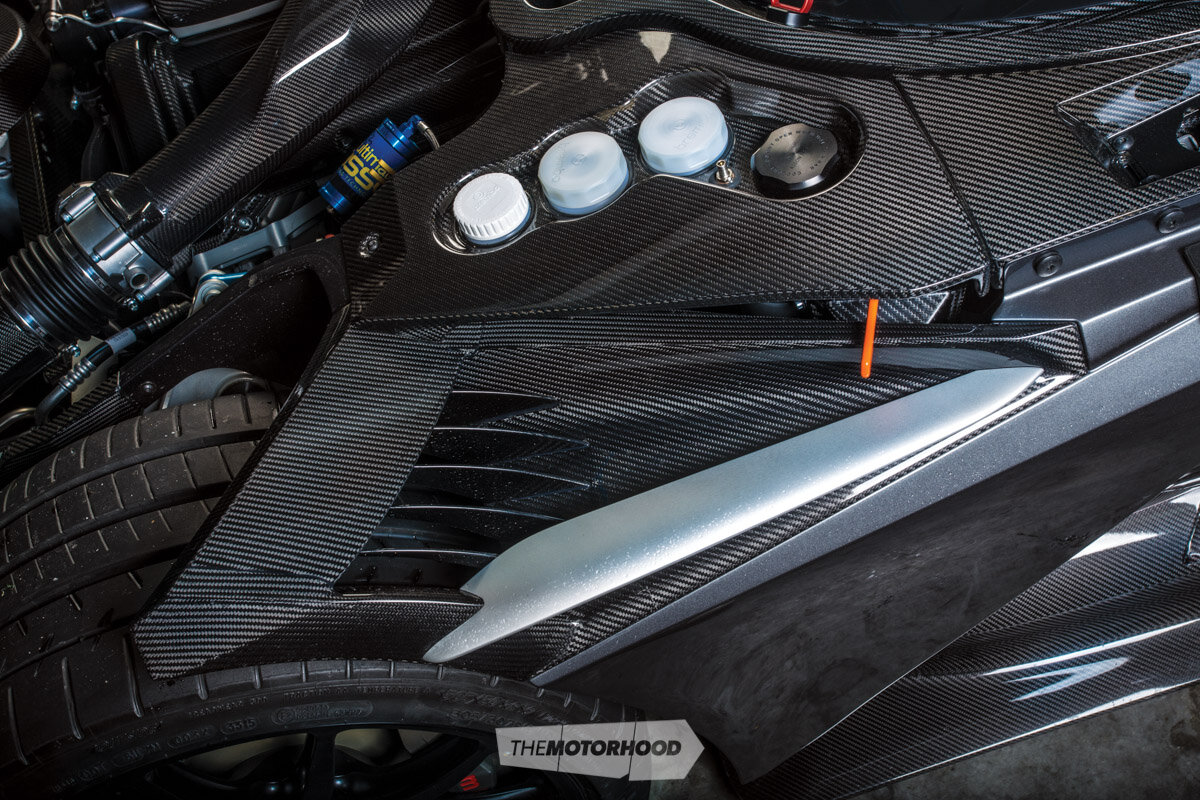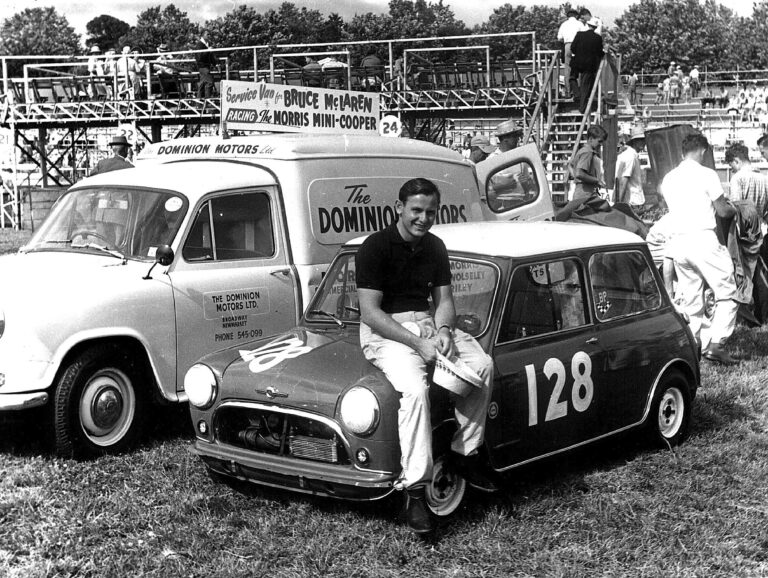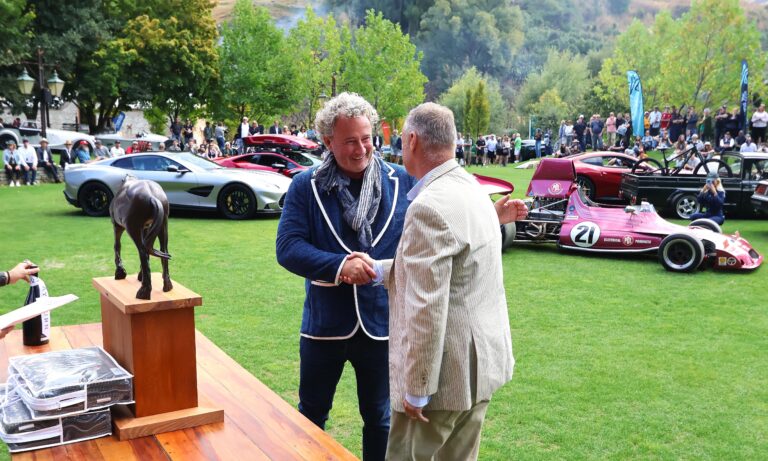The Aston Martin Vulcan — a track-only limited-edition supercar, and the British marque’s most extreme and exhilarating creation to date
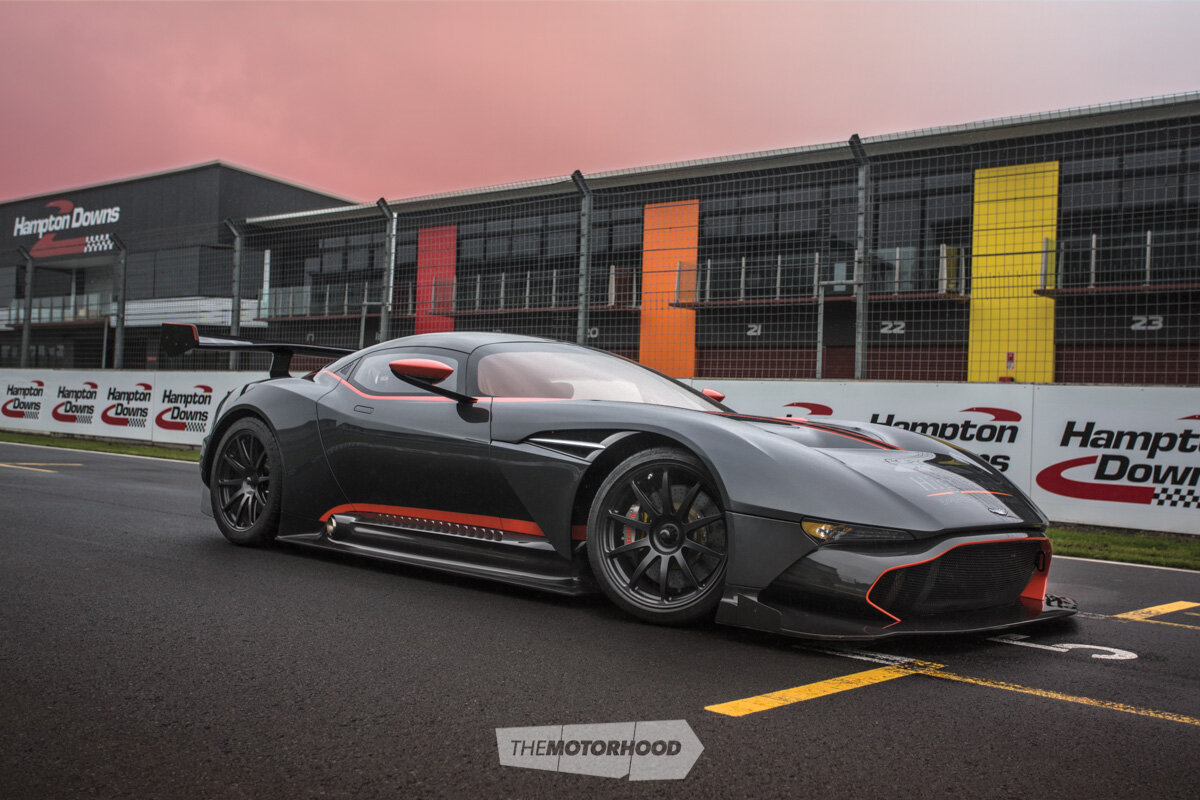
A couple of years ago, three very important cars were released in the world of seven-figure asking prices, limited runs, and staggering design. These were the Porsche 918, the Ferrari LaFerrari (which is a bit like calling your son ‘Jack the Jack’), and the McLaren P1. All these cars were at the cutting edge of the brave new world of extreme motoring, each running a hybrid petrol/electric system to power the wheels. The question for hypercar lovers around the world was simply this: which one of these three is the best new car in the world? The nut had been cracked, the world had been saved. Suddenly, it seemed that any trace of global warming might quickly recede on the back of this bold move by some big players, which surely indicated the death of the internal-combustion engine.
A sign of things to come
At around the same time, Aston Martin also released its brand-new hypercar. While the Porsche, Ferrari, and McLaren were manufactured in limited numbers under the guise of exclusivity (918 of the Porsche 918 were built, 375 McLarens, and just 85 Ferraris), Aston Martin announced only 24 of its new marquee model would be available. On the back of the other manufacturers’ sudden attack of environmental consciousness, you might expect Aston to jump on the bandwagon. But, er, no, it didn’t. Its car is powered by a 7.0-litre V12 engine creating over 600kW (805hp), and Aston relied on a tried-and-true formula of displacement and a series of small explosions to get the power to the wheels. And while the other three worried about airbags and front-lip height to ensure they could get in and out of the New World car park, Aston simply stated that its new hypercar would be in track-going form only, thereby eliminating any need to be concerned about frontal-impact requirements or emissions tests. Perfect.
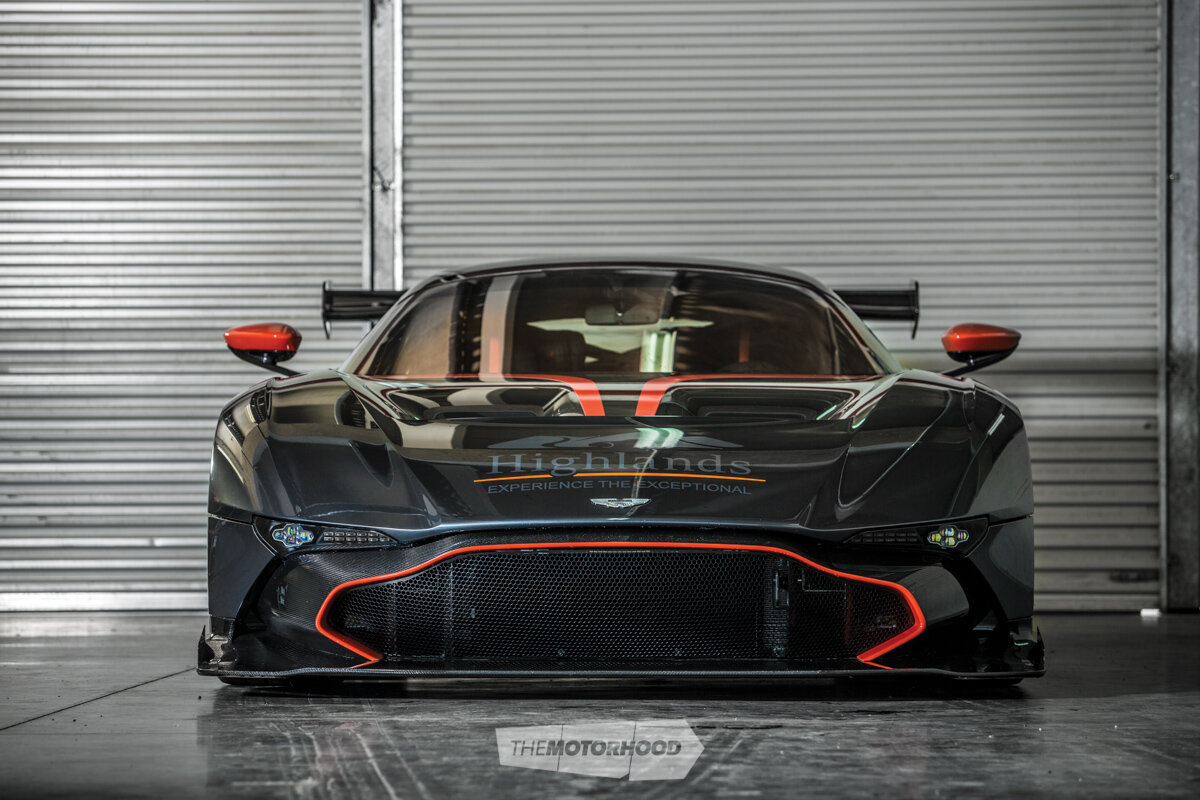
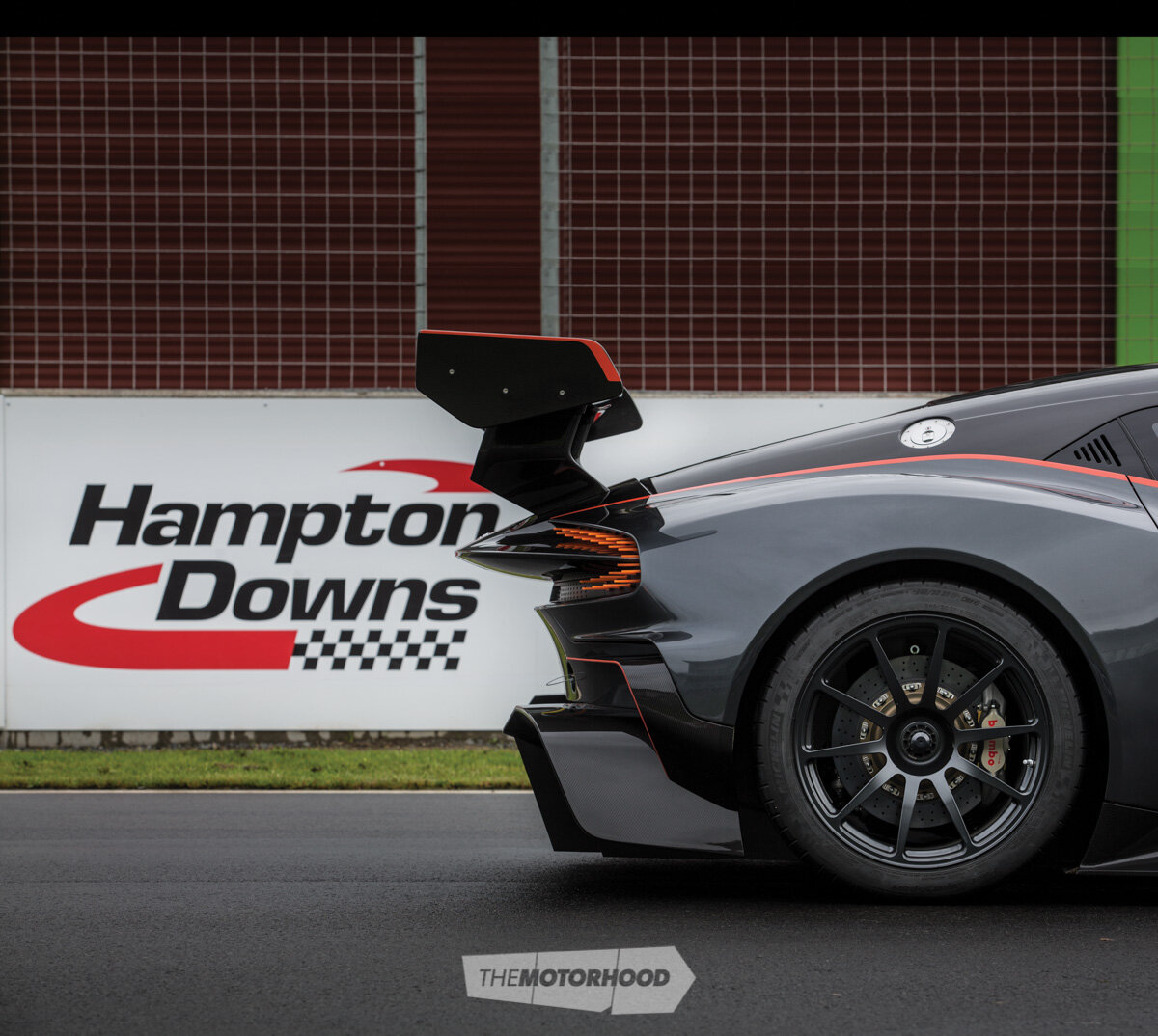
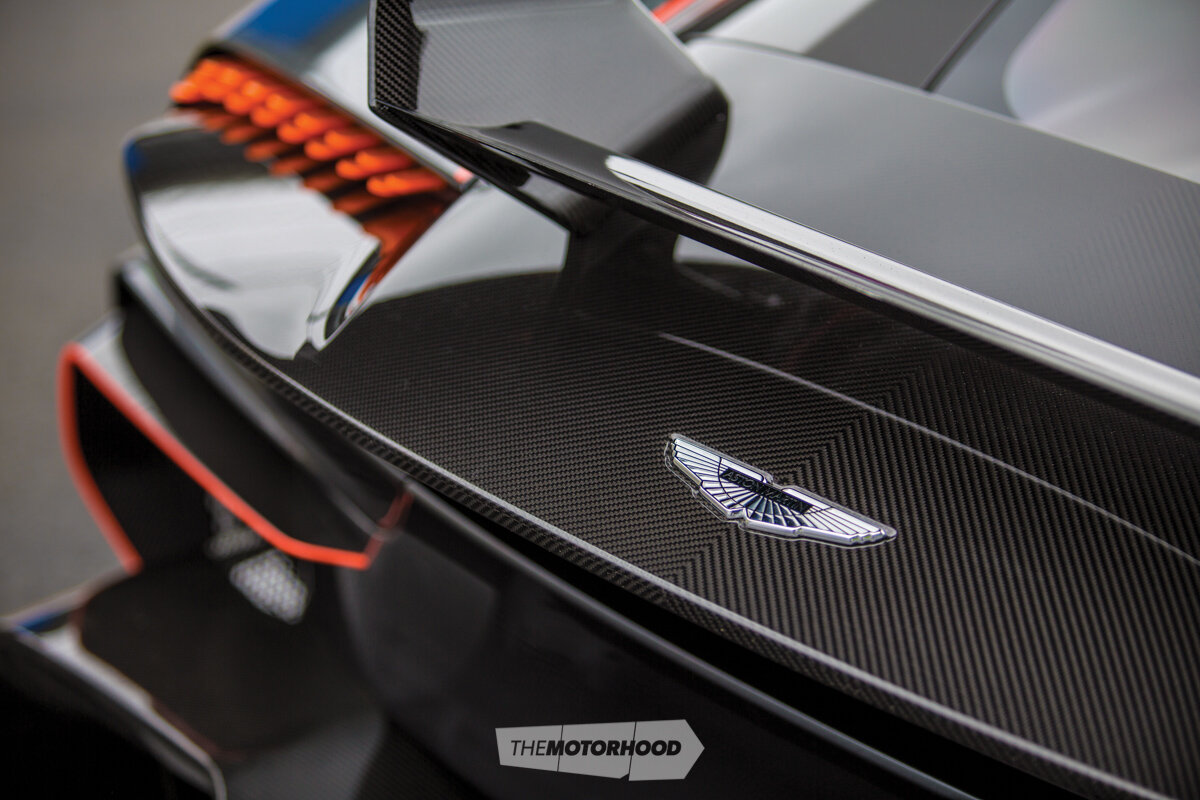
And a name to befit such track-going prowess, wildness, and a track-bred nature? Aston could well be forgiven for using a designated code name like McLaren and Porsche, but, instead, it took the opportunity to spread its wings, naming it the ‘Vulcan’.
If you think the lines are reminiscent of a fighter jet, you’re on the right track. The ‘Vulcan’ name was trademarked by Aston Martin last year, taking it over from BAE Systems (which absorbed British Aerospace), which, at the time, was retiring the Avro Vulcan bomber that had been in service since 1956. In a number of PR stunts around the time of launch, the two Vulcans were lined up together to farewell the old and welcome the new.
Word is that the Vulcan design is a sign of things to come for the Aston brand over the next few years, with three new models due for release before 2020. If that is the case, the future certainly looks bright for the exalted manufacturer.

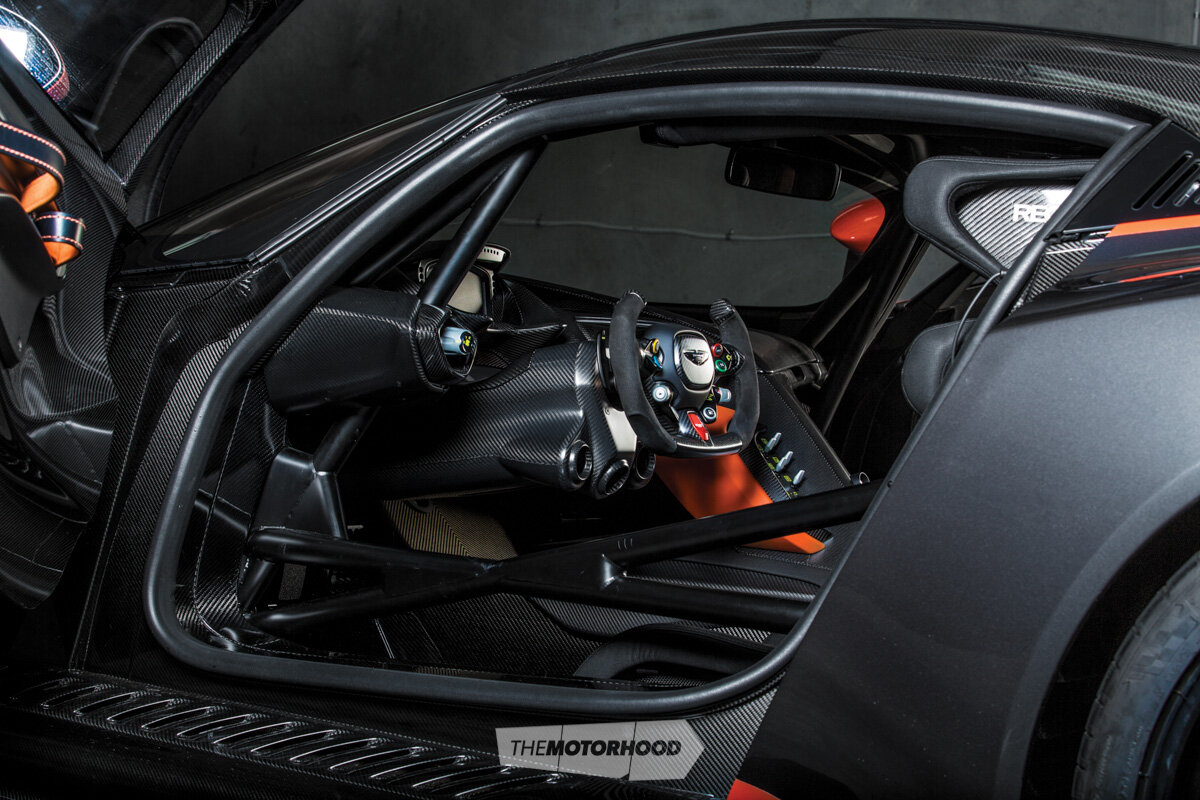
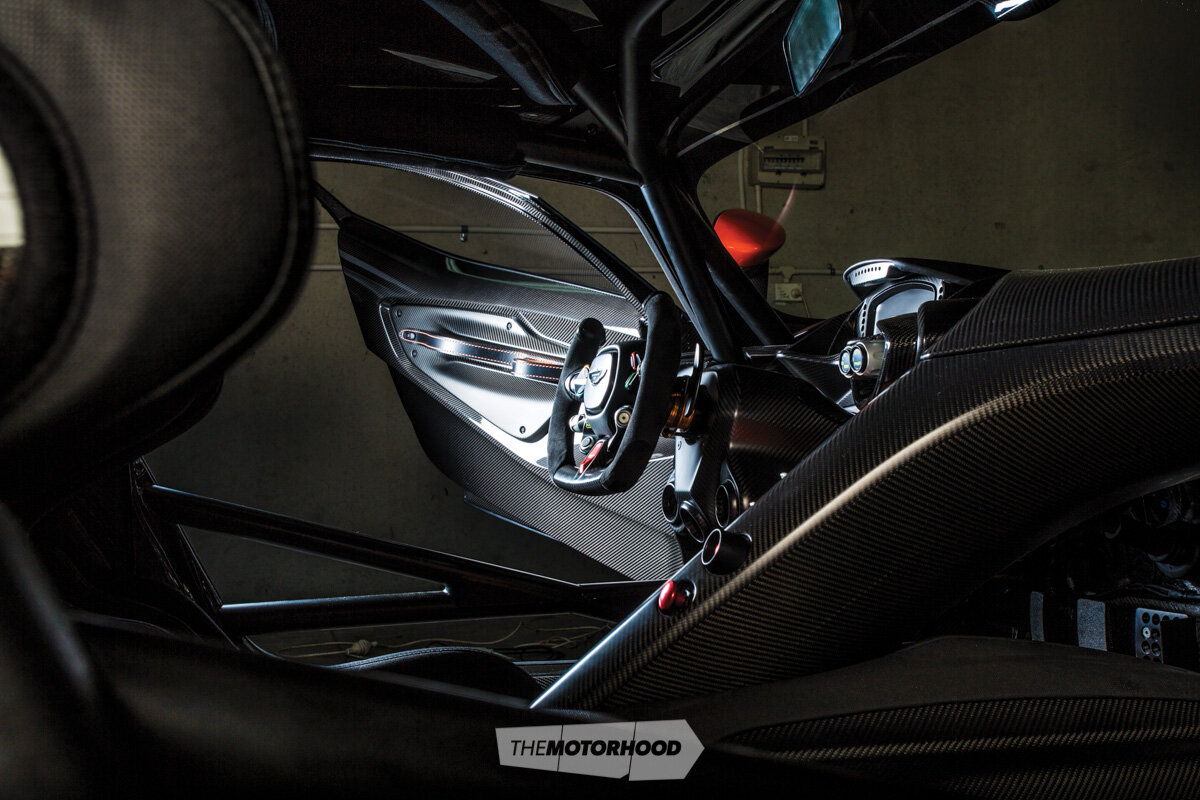
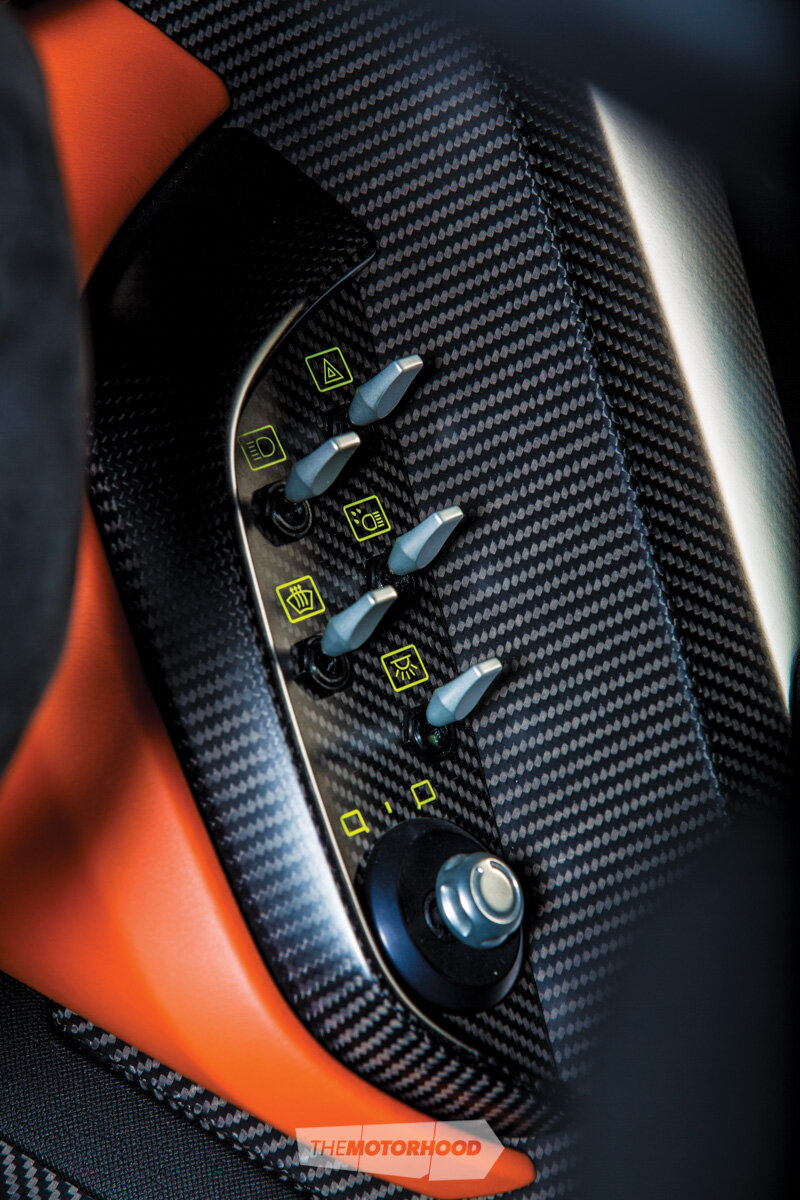
The Kiwi connection
Our featured car got a fair amount of PR when it arrived into New Zealand last year. Its owner is businessman, racing driver, and race-track owner Tony Quinn. You might have heard of some of Tony’s exploits behind the wheel over the years. He’s become a mainstay of Targa events here and across the Tasman as well as building Highlands Park in Cromwell and purchasing Hampton Downs in the Waikato. Thanks to a bit of Tony’s magic and enthusiasm, both tracks are in great shape, and the future and prospects of New Zealand motor sport look a wee bit brighter because of his involvement.
We briefly caught up with Tony at the recent Hampton Downs 101 event, at which the Vulcan was holding court in and among some amazing machinery, and asked him, why the Aston? Quite simply, Tony explained, because he was offered one — how could you pass up that opportunity?

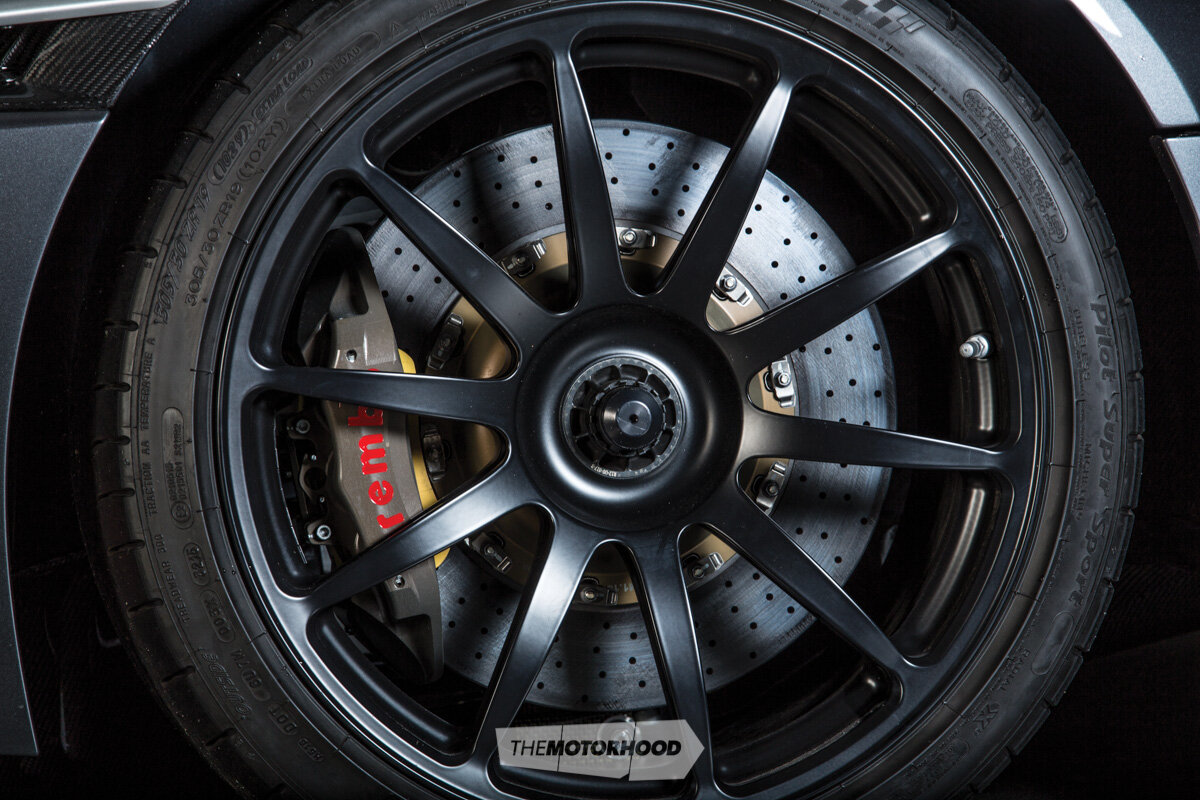

Nitty gritty
The Vulcan uses Brembo racing calipers acting on carbon ceramic racing disc brakes, which measure 380mm in diameter at the front and 360mm at the rear. It also gets a magnesium torque tube with a carbon-fibre propeller shaft, a limited-slip differential, and a rear-mid-mounted Xtrac six-speed sequential gearbox sending power to the 345/30×19 rear wheels and Michelin race-specification tyres; the front tyres measure 305/30×19.
The car features a full carbon-fibre monocoque and body constructed by Aston Martin’s long-term specialist body engineering and manufacturing partner Multimatic, while the race-derived pushrod suspension is complemented by Multimatic Dynamic Suspension Spool Valve (DSSV) adjustable dampers and anti-roll bars front and rear, driver-adjustable anti-lock braking, and variable traction control.
We were lucky enough to spend a few hours with the Vulcan for this photo shoot, and we were there when she was started up and sent around the track for the first time at Hampton 101, with V8 Supercars champion Craig Lowndes behind the wheel. But, for the shoot, because an engineer and an insured driver weren’t on hand to start the Vulcan up, the crew at Hampton Downs kindly towed the Vulcan from the track to the pits for us behind a Ford F150. This underlined that it is enormous — it made the Ford seem like a toy Tonka truck.
When invited to Hampton Downs 101 to watch the Vulcan in action, we leapt at the chance. And we’re certainly glad we did, because the written word — explaining facts, figures, size, and expense — barely does the Vulcan justice; it’s the noise that does it.
Under Tony Quinn’s stewardship, there is a new back straight in play at Hampton Downs, meaning that the track is ready to host some seriously quick metal. And what better way to test it out than with the Vulcan? During its daily lunchtime laps during the Hampton 101 event, all eyes and ears were mesmerized by a V12 howl that seemed to echo around the acres of surrounding farmland — it truly was something special.
